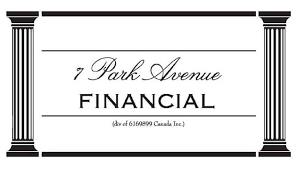|
5 Revolutionary Breakthroughs In Working Capital Business Loans & Cash Flow Canada!
New Methods Of Working Capital Financing in Canada
You Are Looking for Working Capital and Cash Flow Solutions!
You've arrived at the right address! Welcome to 7 Park Avenue Financial
Financing & Cash flow are the biggest issues facing business today
Unaware / Dissatisfied with your financing options?
Call Now! - Direct Line - 416 319 5769 - Let's talk or arrange a meeting to discuss your needs
Email - sprokop@7parkavenuefinancial.com

Working Capital Business Loans: Innovative Perspectives
Read on because we're challenging traditional views on working capital, unveiling fresh solutions vital for Canadian businesses.
Mission impossible? We're going to try and reprogram your business brain around some innovative ways to look at working capital loan and cash flow solutions for Canadian business - and it might be a loan scenario... and then again it might not.
The Revolutionary Nature of Liquidity Solutions
And about that word 'revolutionary' ... we’ll leave that up to you to decide. However, we're quite sure we've got some working capital and cash flow innovation coming your way.
The Liquidity Gap in Canadian Business
A popular term for the business owner these days is 'the liquidity gap' - it is simply the challenge that small and medium-sized businesses tend to face in Canadian business financing. When you really think about your balance sheet, that liquidity gap more often than not tends to focus on the investment you carry in receivables and inventory.
The Struggles with Traditional Financing
Also, financing options utilized in the past - we tend to call them 'traditional financing', don't seem to be available, and when they are they don’t suit your needs regarding: size, type of facility, and external collateral and guarantees that might be required.
The Canadian Banking Conundrum
No one is more a fan of Canadian banks than us. We love them. Canadian business owners and financial managers seem to struggle with why they can’t get financing from the bank via a traditional bank loan. We heard a great explanation of that recently. So, have we got a great story for you?
As Canadians we put our funds into a bank, we also seem to have this feeling that we should be able to get it out anytime we want it. That's the story! Because in a simplistic way, the banks can't really over lend to small and medium businesses because that is not the deal it made with me as a depositor. So I apologize for that! I made a deposit; I didn't contribute to a start-up hedge fund!
Bank Offerings for Working Capital
Anyway... working capital and cash flow solutions are clearly available from Canadian chartered banks - but repayment from you must be certain- so have those good balance sheets and additional collateral and guarantees ready.
Exploring Revolutionary Working Capital Solutions
Back to those 'revolutionary' working capital solutions we have talked about. And as we said, they might not be a pure 'loan‘.
Innovative Cash Flow Solutions
From our point of view some of the most innovative ways to achieve 'cash flow nirvana' might be facilities you have never heard of.
What are they?
5 of the best solutions you should consider are as follows -
Purchase order financing,
Assset based lines of credit,
Short Term working capital loans/merchant cash advance loans via a lump sum installment loan repayable monthly,
Non-notification receivable financing,
Tax credit monetization / Sr&ed
Overview of 5 Innovative Solutions
A short recap of those to allow for comparing working capital loans and asset monetization strategies.
Purchase order financing allows your supplier to be paid directly by the financier.
Asset based lines of credit are facilities based on current and ongoing values of your total inventory and receivables.
Are you a smaller or retail-oriented business? Short-term working capital loans / Merchant advance financing provides cash flow today for sales you make tomorrow.
Everyone has heard of Factoring - Confidential receivable financing - aka ' non-notification ' provides you with the same benefits, i.e. same-day cash flow on sales, but you bill and collect your receivables without notification to clients, suppliers, etc.
And finally, have you got an SRED claim to be filed? Monetize it today with an SR&ED bridge loan.
Key Takeaways
-
Definition of Working Capital:
- The difference between a company's current assets (like cash, accounts receivable, and inventory) and current liabilities (such as accounts payable). Essentially, it's the capital needed for daily operations.
-
Purpose of Working Capital Loans:
- These are short-term loans designed to finance everyday business operations, not long-term investments or assets. They are essentially for businesses to bridge financial gaps, such as payroll or inventory purchases, especially during periods of reduced cash flow.
-
The Liquidity Gap:
- This refers to the challenge businesses face when there's a timing mismatch between incoming revenues and outgoing expenses. Working capital loans help in bridging this liquidity gap, ensuring the business remains operational.
-
Types of Working Capital Solutions:
- There are several types, including asset-based lines of credit (based on the value of inventory and receivables), purchase order financing (financing based on confirmed purchase orders), merchant advance loans (cash advance against future sales), CID receivable financing (immediate cash flow on sales), and tax credit monetization.
-
Traditional vs. Innovative Financing:
- Traditional financing often involves banks, has stricter requirements, and may require collateral. In contrast, innovative working capital solutions are more flexible, might offer quicker access to funds, and are tailored to modern business needs. They can often be sourced from alternative lenders.
Conclusion
Want more info on the best-working capital loan solution and business loan options? Seeing the potential benefits already? Call 7 Park Avenue Financial, a trusted, credible and experienced Canadian business financing advisor for working capital business loans and solutions that maximize your cash flow requirements. It's as simple as that.
FAQ
What differentiates traditional financing from these innovative capital solutions?
While traditional financing often has stricter requirements, limited flexibility, and might demand external collateral, innovative working capital solutions are tailored to meet the specific needs of modern businesses and can provide quicker access to funds.
How do asset-based lines of credit and Confidential receivable financing differ?
Asset-based lines of credit are based on the ongoing value of your inventory and receivables, while CID receivable financing provides immediate cash flow on sales, letting businesses bill and collect their own receivables without notifying clients or suppliers.
Why is there a liquidity gap challenge in Canadian business financing?
The liquidity gap arises due to the investment many SMEs make in receivables and inventory, coupled with traditional financing options not always being available or aligned with business needs. For small business owners and startups, the business owner's personal credit and lack of business bank statements and proper financial statements may often not meet bank standards for SME lending for either a line of credit or term loan funding.
What are some strategies for efficient working capital management?
Inventory Management: Regularly review and manage inventory levels to ensure that funds aren't tied up in excess stock.
Streamlined Receivables: Implement strategies to accelerate the collection of accounts receivables, like offering early payment discounts or using electronic payment systems. In some cases, prudent use of business credit cards might make sense.
Delay Payables: Without jeopardizing supplier relationships, negotiate favourable payment terms, taking advantage of full credit periods.
Regular Cash Flow Forecasting: Forecast cash flow regularly to anticipate financing needs around debt payments and avoid cash shortages.
Contingency Planning: Have a backup plan or emergency funds for unforeseen expenses or downturns.
Negotiate Better Terms with Vendors: Whether it's a longer payment cycle or discounts for bulk purchases, better terms can improve cash flow.
Review Overheads: Regularly audit fixed and variable costs, and consider cutting unnecessary expenses.
What are the risks and benefits of working capital loans?
Benefits:
Flexibility: These loans are typically short-term, which means businesses can finance immediate needs without long-term debt commitments.
Quick Access to Funds: Especially from alternative lenders, these loans can often be processed and disbursed faster than traditional loans.
Operational Continuity: They provide the cash flow necessary to keep operations running during periods of reduced revenue.
No Equity Sacrifice: Unlike some financing methods, businesses don’t have to give away ownership stakes.
Risks:
Interest Rates: Working capital loans might have higher interest rates compared to long-term loans, increasing the cost of borrowing.
Over-reliance: Frequent borrowing can lead to a cycle of debt, where businesses rely too heavily on external financing.
Potential for Bad Financial Practices: Easy access might deter businesses from addressing underlying cash flow issues.
Collateral Requirements: Some loans might require collateral, posing a risk of losing assets if repayment becomes an issue.
What is the difference between short-term and long-term business financing?
Short-term Financing:
Duration: Typically lasts for a period of up to one year.
Purpose: Used for daily operational expenses like payroll, rent, and inventory purchases.
Interest Rates: Might have higher interest rates because of the shorter repayment time and perceived risk.
Flexibility: Often easier and quicker to obtain, especially from alternative lenders.
Examples: Working capital loans, trade credit, and merchant cash advances.
Long-term Financing:
Duration: Extends beyond one year, often several years to decades.
Purpose: Used for major investments or long-term projects, such as expanding facilities or purchasing heavy machinery.
Interest Rates/ Loan costs: Generally lower than short-term loans due to the extended repayment term and often secured nature of the loan.
Approval Process: Might have a more rigorous application and approval process, requiring detailed business plans, financial statements, and collateral.
Examples: Mortgages, term loans, and equity financing.

' Canadian Business Financing With The Intelligent Use Of Experience '
STAN PROKOP
7 Park Avenue Financial/Copyright/2024

Stan Prokop is the founder of 7 Park Avenue Financial and a recognized expert on Canadian Business Financing. Since 2004 Stan has helped hundreds of small, medium and large organizations achieve the financing they need to survive and grow. He has decades of credit and lending experience working for firms such as Hewlett Packard / Cable & Wireless / Ashland Oil
|